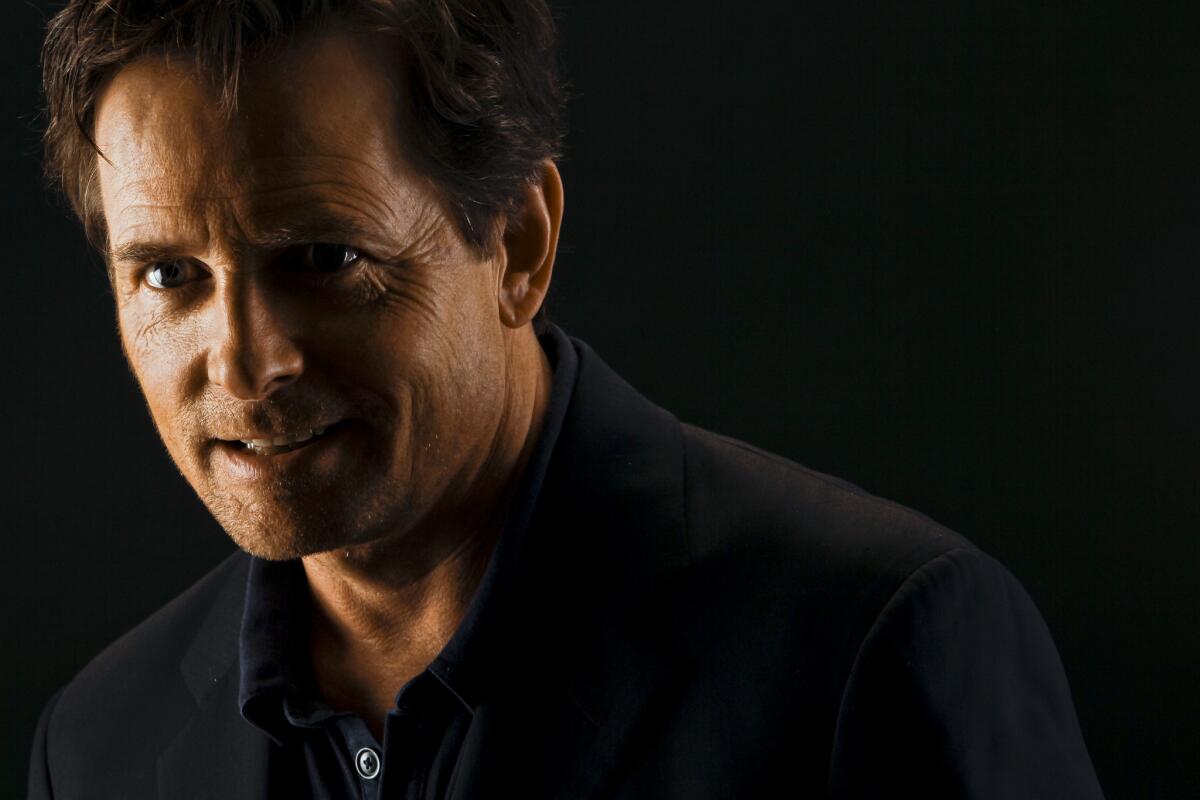TV broadcasters are in suspense over their upfront ad haul

- Share via
Can the return of Michael J. Fox, agent Jack Bauer and “Ironside” help vanquish the flesh-eating zombies that are threatening to take a bite out of television broadcasters’ fortunes?
ABC, CBS, Fox and NBC are unveiling their fall lineups this week with the hopes that their latest crop of crime-solving dramas and half-hour comedies will cure what ails the broadcast industry. The networks are coming off a lackluster season marked by falling ratings and a failure to produce new hits on the magnitude of cable channel AMC’s zombie show “The Walking Dead.”
News Corp.’s Fox watched its juggernaut “American Idol” lose 20% of its audience compared with last year. The network tumbled out of first place among viewers ages 18 to 49, the group that advertisers pay a premium to reach. ABC, owned by the Walt Disney Co., will probably finish in fourth place in that key advertising demographic.
PHOTOS: Hollywood Backlot moments
NBC, owned by cable giant Comcast Corp., is struggling to make a comeback after eight seasons in the ratings cellar. The peacock network finished the February sweeps period in fifth place behind Spanish-language network Univision.
“We know how much work we have ahead to grow our business,” NBC Entertainment Chairman Bob Greenblatt acknowledged Monday at NBC’s presentation to advertisers at Radio City Music Hall in New York.
Much is riding on the networks’ programming bets. In recent years, the broadcasters have collected $9 billion worth of commitments annually for prime-time commercials in the so-called upfront ad market. Wall Street monitors the spring auction, when the networks sell three-quarters of the advertising time for the upcoming season, because it signals the health of the television industry.
Broadcast television isn’t as dominant as it once was. Not only have cable networks stolen some of broadcasters’ thunder, but online video services — including YouTube, Hulu and Netflix — have been making aggressive plays for viewers and marketing dollars.
Advertisers also are spreading their bets because they no longer can depend only on 30-second spots to move products because viewers increasingly are using digital video recorders to fast-forward through the commercials.
That’s why broadcasters are attempting to breathe new life into some old classics, including “Ironside,” “Dracula” and Carl Sagan’s “Cosmos.” They’re also enlisting more big-name stars, including Michael J. Fox, who will star in an NBC sitcom loosely based on his own life. In the show, Fox plays a popular TV newscaster who tries to make a comeback after being sidelined with Parkinson’s disease.
PHOTOS: Cable vs. broadcast ratings
On the Fox network, Greg Kinnear is cast as a defense attorney with a gambling problem. Kiefer Sutherland will reprise his role as Jack Bauer in a short-run series called: “24: Live Another Day.”
“The networks really need to develop some new programs that stick,” said Sam Armando, director of strategic intelligence for Starcom MediaVest Group Exchange. “They are not going to get increased viewership just by bringing back their returning shows.”
The incursion by technology and the rise of cable shows has added more drama to this year’s auction, turning it into a real-life television cliffhanger to see whether the upfront haul for the broadcasters will fall short of the $9-billion mark.
“The money might not be as bountiful as it has been in the past,” said Michael Nathanson, a senior media analyst with the investment firm Nomura Securities. Still, he added, naysayers in the past would have lost money betting against the major networks.
That’s because ABC, CBS, Fox and NBC continue to draw larger audiences than any other advertising platform, enabling the networks to maintain — and even raise — their premium rates that make up for the audience erosion.
“While watching TV isn’t what it was, say, five years ago, it is still the main driver of pop culture,” Kevin Reilly, Fox broadcasting entertainment chairman, said Monday during Fox’s presentation.
Fox has seen its prime-time ratings plummet 22% compared with the 2011-12 television season. It slipped out of first place among viewers ages 18 to 49 after stumbling last fall with a ho-hum World Series and droopy ratings for high-profile shows, including “X Factor.”
FOX’S NEW DRAMA TRAILERS: ‘Almost Human,’ ‘Sleepy Hollow,’ ‘Rake’
More catastrophic to the network’s fortunes was the collapse of “American Idol,” which is expected to return next year with new judges.
Fox is expected to finish second among viewers ages 18 to 49 and third overall.
“This was not our best year,” Reilly conceded.
CBS, which averages nearly 12 million viewers a night, was the only broadcast network to maintain its audience. The network is on pace to finish atop the heap in total audience and among viewers ages 18 to 49. It would be the first time since 1991-92 that CBS has finished first in the key advertiser demographic.
Advertising insiders say CBS is in the strongest negotiating position. This month, CBS Corp. Chief Executive Leslie Moonves promised Wall Street that the network would negotiate ad rate increases of 7% to 12%.
NBC will probably finish third among viewers ages 18 to 49 but fourth overall. After a strong fall boosted by NFL football and “The Voice,” the peacock lost its way in January. The network’s audience slipped 6% compared with last season. But football begins this summer, and the network will benefit next season by broadcasting the Winter Olympics from Russia in February.
ABC is expected to finish in second place in overall viewers. The network has lost more than 6% of its audience compared with last season because its longtime hits, including the hospital drama “Grey’s Anatomy,” lost steam and the once-dominant “Dancing With the Stars” stumbled in the ratings.
Still, advertisers predict that the broadcasters should be able to maintain their premium ad rates.
“It’s not a case of ‘Your ratings are down so we’re not going to buy you,’” Armando said. “There could be a shift in dollars to other sources, but the programming pipeline still is flowing one way. The networks are the ones creating the content that people want to watch — on TV and online. So this process remains critically important.”
MORE
INTERACTIVE: TVs highest paid stars
ON LOCATION: People and places behind what’s onscreen
PHOTOS: Hollywood back lot moments
More to Read
Inside the business of entertainment
The Wide Shot brings you news, analysis and insights on everything from streaming wars to production — and what it all means for the future.
You may occasionally receive promotional content from the Los Angeles Times.











